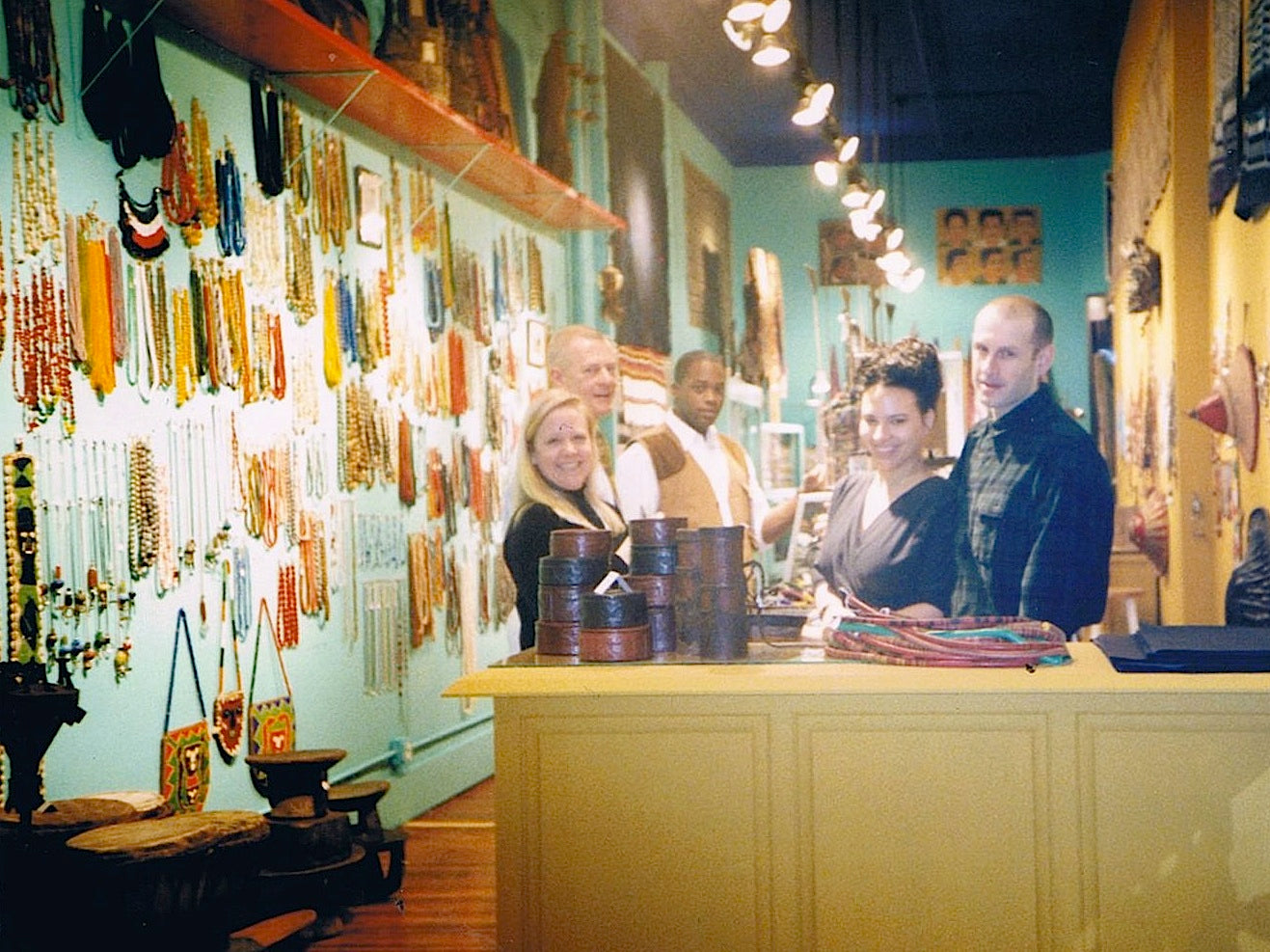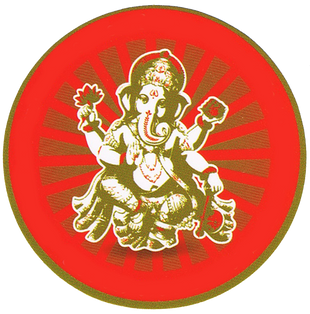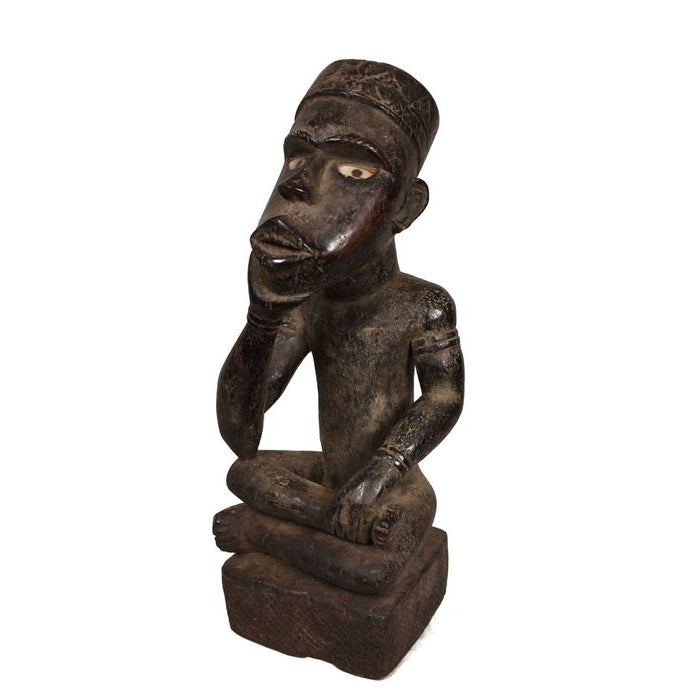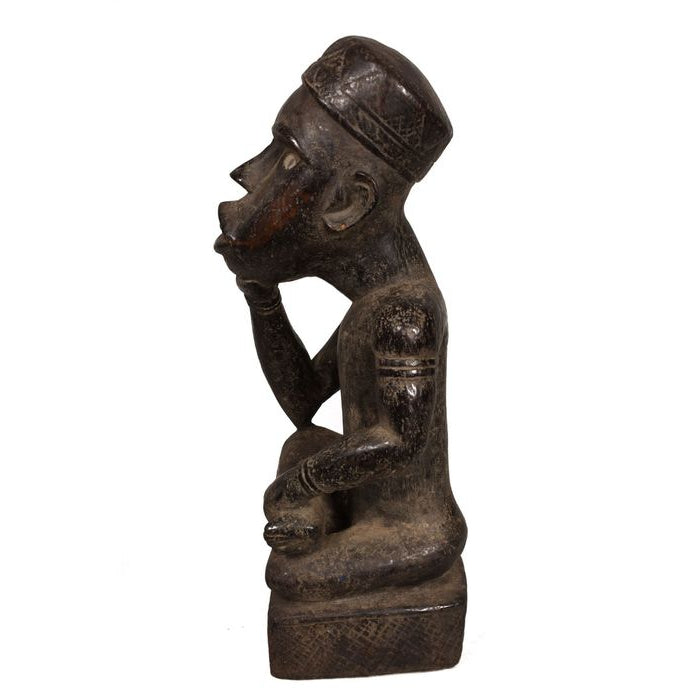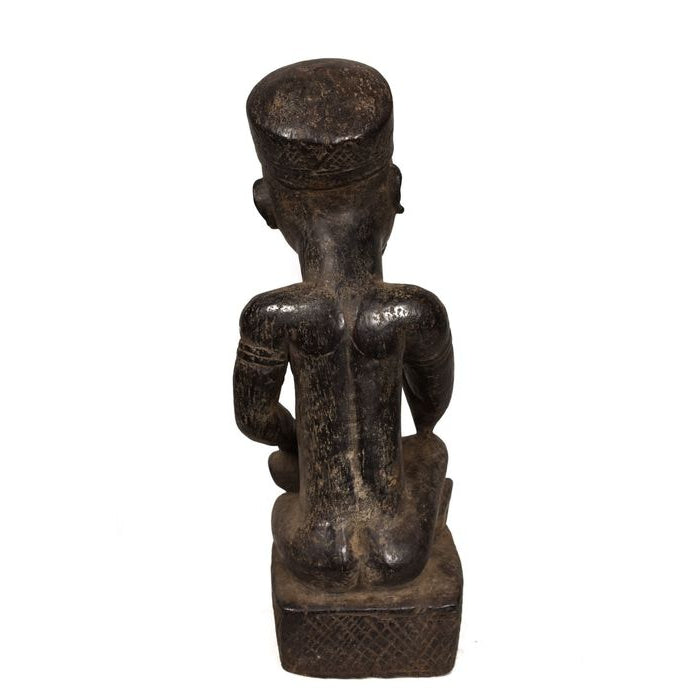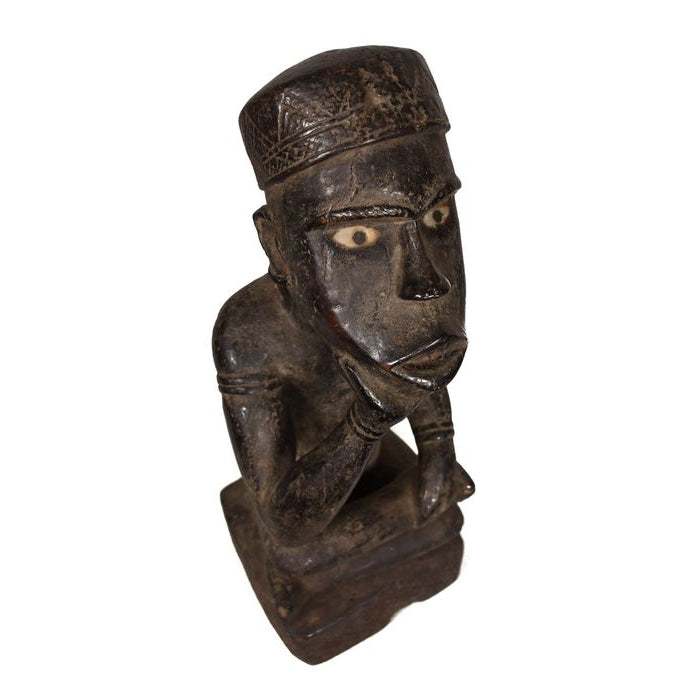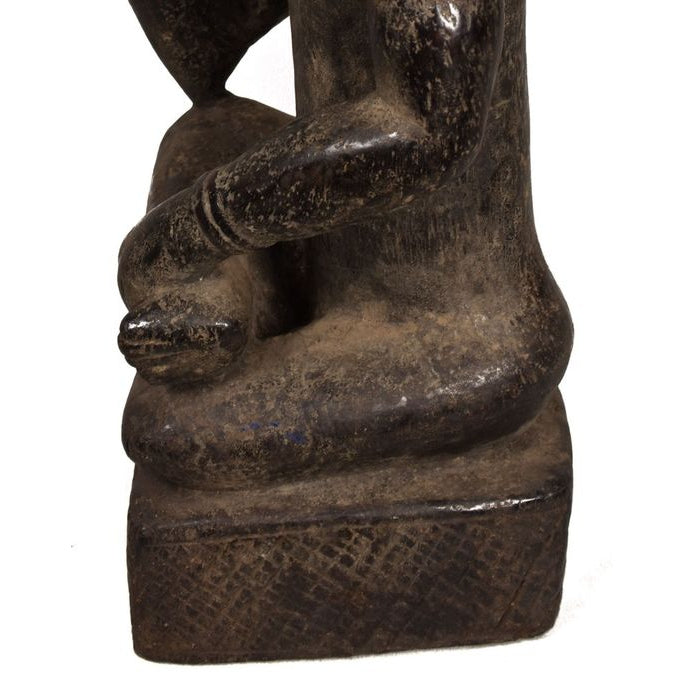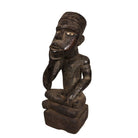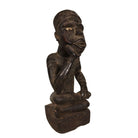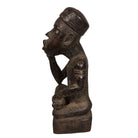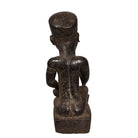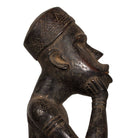Yombe Guardian Mediator Figure, Congo #832
Couldn't load pickup availability
Hello to all of our wonderful customers and friends! We know times are difficult for everyone right now in this uncertain world, and we cherish providing the vibrant, happy space you can come to when you need a little pick-me-up.Unfortunately, things are also pretty dire for small businesses, and we could use your help to ensure our ability to keep our doors open. For 39 years we’ve been honored to be a unique part of the NYC community, and we have every hope of continuing to be that little wonderland in your life for a long, long time.However, since the beginning of 2025, our business has been affected by the double whammy of a significant drop in income paired with rising costs. Despite our best efforts, we have found ourselves falling deeper and deeper into debt. This substantial decrease in day to day sales at our Union Square location is calling into question whether keeping our brick and mortar store open is sustainable.
Couldn't load pickup availability
We truly love that you're making things, but unfortunately we do not buy things consignment or purchase outside work.
We have a reliable network of suppliers and are not currently in the position to purchase your collections. But we're thrilled that you thought of us.
Unfortunately no, we cannot create custom designs or sizes for our customers. However, you may be able to shorten them / decrease the width of the designs we offer slightly by manipulating the wires that connect the beads together.
A: It depends on a variety of factors. Get in touch with us to let us know what you're interested in learning, and we'll let you know if it's a possibility.
A: We do indeed sell at wholesale prices to those who meet our requirements. We have a general policy and a Wholesale Plus+ program for larger companies than would truly like to purchase in bulk. To learn about our wholesale policies, please see here.
A: Beads of Paradise does not, at anytime, give loans (pulls), secured or unsecured. We do however do rentals for stylists. Please see here for more info.
A: We love working with you when possible. Please send us a picture and or a description of what you're interested in and we'll be in touch.
It is our policy that NO Labor is done “on the spot”/”while you wait”. Any exceptions to this are at the discretion of the management and only at the discretion of the management. All items at Beads of Paradise are sold “As Is” with no warranty implied or expressed. If you have a problem with one of your purchases, please ask to see a manager. Thank you for your understanding.
For most pieces of jewelry on our site, we should be able to accommodate a request such as this, with some exceptions. You can purchase and leave a note when you purchase, or get in touch with us to inquire (please include a link to the product in question).
Beads Of Paradise began in the late 1980’s as a small store in the East Village. We originally specialized in African antiquities, textiles, beads and jewelry – but as interest in world art and beads grew throughout the 1990s, we underwent a major expansion and moved to our current location in the historic Flatiron district of New York City. Read More; A Visual History
